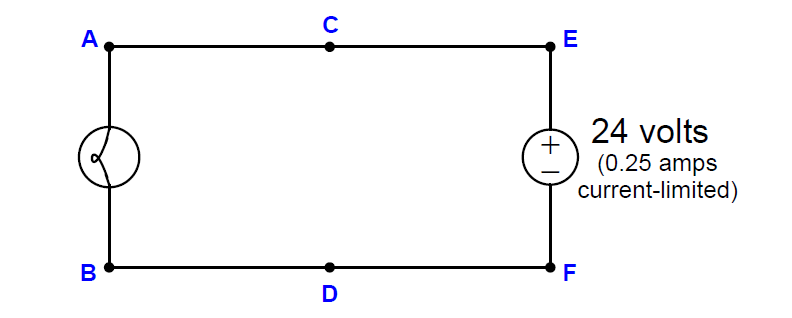Suppose the lamp refuses to light up. A voltmeter registers 24 volts between test points C and D:

First, list all the possible (single) faults that could account for all measurements and symptoms in this circuit, including failed wires as well as failed components:
Now, determine the diagnostic value of each of the following tests, based on the faults you listed above. If a proposed test could provide new information to help you identify the location and/or nature of the one fault, mark “yes.” Otherwise, if a proposed test would not reveal anything relevant to identifying the fault (already discernible from the measurements and symptoms given so far), mark “no.”
Finally, develop a rule you may use when assessing the value of each proposed test, based on a comprehensive list of possible faults.
Here is a comprehensive list of faults, each one individually capable of accounting for the symptom (no light) and the measurement of 24 volts between C and D:
Based on this short list of possible faults – assuming only one of them is actually true – the value of each proposed test is as follows:
A good rule to apply when evaluating proposed tests is to ask the question: “Will this test give me the exact same result no matter which one of the possible faults is true?” If so, the test is useless. If not (i.e. the results would differ depending on which of the possible faults was true), then the test has value because it will help narrow the field of possibilities.
The conveyor sorting machine is widely used in the packing industries using the PLC program…
Learn the example of flip-flop PLC program for lamps application using the ladder logic to…
In this article, you will learn the STAR DELTA programming using PLC controller to start…
Lube oil consoles of rotary equipment packages in industrial process plants are usually equipped with…
Rotating equipment packages such as pumps, compressors, turbines need the lube oil consoles for their…
This article explains how to blink lights in ladder logic with a detailed explanation video…